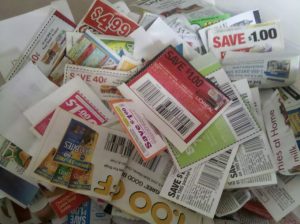A coupon is a ticket or document that can be exchanged for a financial discount or rebate when purchasing a product. Coupons offer instantly redeemable savings on certain products. That means that consumers get an instant reduction on the price at the point of purchase. They don’t have to send anything to the manufacturer, they don’t have to enter any type of contest. They walk away from the store with the satisfaction that they have saved money.
Why would a company let consumers walk away paying less for their product than the displayed price? Peer pressure may be one reason. Coupons are an inexpensive form of marketing. Due to this fact, almost half of all retailers say that they use some type of coupon program. If a company’s competitors are doing it, the company will most likely consider doing it as well.
That’s not the only reason, however. Coupon programs offer a host of benefits. They can:
- Increase the number of new customers – A customer may try a product just because they have a coupon for it and like it enough to continue to buy it.
- Help move a specific product
- Build brand awareness – A consumer sees the brand name on the coupon even when the coupon is not redeemed.
- Reward current customers – Customers are delighted when they receive the gift of savings from the manufacturer of a product that they buy regularly.
- Entice former customers to return
- Create the opportunity for the marketer to up-sell a more profitable product
- Provide the marketer with a highly measurable marketing program
The idea behind a coupon program isn’t simply to get consumers to buy your product. You want them to notice your brand. Well-designed coupon programs accomplish that goal. In addition, retailers will benefit from such programs as it will drive traffic to their store.
Coupons, though, can have both advantages and disadvantages. The optimal scenario for marketers is that coupons create brand awareness without consumers using the coupon. In fact most coupons are never redeemed. This makes marketers happy as there is no reduction in revenue. A reduction of revenue, however, is just one of the disadvantages of a coupon program. Others include:
- Mass-cutting
- Counterfeiting
- Misredemptions
You will not be able to judge the effectiveness of your coupon campaign without testing and measuring it. Tracking codes let retailers know not only who redeemed the coupons, but also where the coupons were found. This data can help you decide which coupon is best for your target audience.
Rebates
A rebate is an amount paid, by way of reduction, return, or refund on what has already been paid or contributed. It one of the sales incentives promotion marketers use to supplement product sales.
The mail-in rebate (MIR) is the most common.
Rebates are offered by either the retailer or the manufacturer of the chosen product. Large stores often work in conjunction with manufacturers, usually requiring two or even three separate rebates for each item. Manufacturer rebates are sometimes valid only at a single store. Rebate forms and special receipts are sometimes printed by the cash register at time of purchase on a separate receipt, or available online for download.
In some cases, the rebate is available immediately, in which case it is referred to as an instant rebate. Some rebate programs offer several payout options to consumers, including a paper check, a prepaid card that can be spent immediately without a trip to the bank or even PayPal payout.
Rebates are heavily used for advertised sales in retail stores in the United States. In the UK, rebates are less common, with manufacturers and retailers preferring to give discounts at the point-of-sale rather than requiring mail-in or coupons. However rebates are sometimes given in the form of “cashback offers” for mobile phone contracts or other high value retail items sold alongside a credit agreement.
Premiums
Another form of consumer sales promotion is the premium. Premiums are prizes, gifts, or other special offers received when a consumer purchases a product. When a company presents a premium, the consumer pays full price for the good or service, as opposed to coupons that grant price reductions or to samples, instead of receiving the actually product.
One of the first loyalty marketing programs ever offered was a premium in which proof of purchase was redeemed for prizes or gifts. Some marketing experts believe that coupon over-use damages a brand ‘s image, while premiums can actually enhance it. The key is to match the right type of premium with the product and a predisposed buyer.
Though not as successful as coupons, premiums can be used to boost sales and remain a valuable consumer promotional tool. In the United States, each year over $4.5 billion is spent on premiums.
Loyalty Marketing
Loyalty marketing is an approach to marketing, based on strategic management, in which a company focuses on growing and retaining existing customers through incentives.

Various Loyalty Cards: Loyalty programs are structured marketing efforts that reward, and therefore encourage, loyal buying behavior.
Branding, product marketing and loyalty marketing all form part of the customer proposition – the subjective assessment by the customer of whether to purchase a brand or not, based on the integrated combination of the value they receive from each of these marketing disciplines.
The discipline of customer loyalty marketing has been around for many years, its value as an advertising and marketing vehicle have made it omnipresent in consumer marketing organizations since the mid- to late-1990s.
Some loyalty marketing industry insiders, such as Fred Reichheld, have claimed a strong link between customer loyalty marketing and customer referral. In recent years, a new marketing discipline called “customer advocacy marketing” has been combined with, or replaced, “customer loyalty marketing. ” To the general public, many airline miles programs, hotel frequent guest programs and credit card incentive programs are the most visible customer loyalty marketing programs.
Contests and Sweepstakes
Consumers tend to like sales promotions because they get something for “free. ” If you as a marketer really want to get their attention, however, give a select few of them the chance to receive something with a high value.
Marketers who want to use this type of sales promotion have two options to choose from:
- Contests
- Sweepstakes
Contests
Contests normally require the participant to perform some type of activity. The winner is selected based on who performs the best or provides the most correct answers. No purchase is required to enter a contest and a panel of judges determines the winner. Consumers can enter as many times as they wish, although it is permissible for firms to restrict customers to one entry per visit to the store.
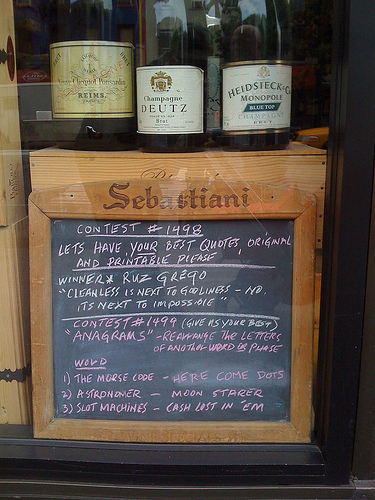
The Best Quote Wins: Contests require skill; sweepstakes generally only reward luck.
Sweepstakes
There is another consumer sales promotion known as a sweepstake (also known by its inflected forms which are both single and plural: sweepstakes and sweeps). These have become associated with marketing promotions targeted toward both generating enthusiasm and providing incentive reactions among customers. A sweepstake entices consumers to submit free entries into drawings of chance (and not skill) that are tied to product or service awareness wherein the featured prizes are given away by sponsoring companies.
Prizes can vary in value from less than one dollar to more than one million U.S. dollars and can be in the form of cash, cars, homes, electronics, and so on. In Australia, New Zealand and the United Kingdom, a sweepstake is known as a competition.
Sweepstakes frequently have eligibility limited by international, national, state, local, or other geographical factors.
Sweepstakes are often referred to by marketing promoters as second-chance sweepstakes when utilized in conjunction with the awarding of unclaimed prizes during instant-win promotions.
Sampling
In 2000, best-selling author Seth Godin released a book entitled “The Idea Virus” and then proceeded to give it away for free. Was Seth, who has sold tons of books, suffering from temporary insanity? No, quite the contrary. You see, Seth knew that if he gave the book away for free, people would read it, and if they liked it they would help create a buzz about the book. That’s exactly what happened. In less than a month, 400,000 copies were downloaded for free and even though the downloads were free, people bought the hardcover. The book ended up being #5 on Amazon.com’s best seller list. The promotion strategy Seth Godin used is called sampling and when done correctly it can be one of the most effective ways to market your product.
A free sample or “freebie” is a portion of food or other product (for example, beauty products) given to consumers in shopping malls, supermarkets, retail stores, or other venues. Sometimes samples of non-perishable items are included in direct marketing mailings.
The purpose of a free sample is to acquaint the consumer with a new product. It is similar to the concept of a test drive, in that a customer is able to try out a product before purchasing it.
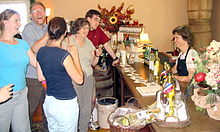
Try It, You’ll Like It: This free wine tasting allows potential buyers to try, or sample, the wine before making a purchase.
Many consumer product companies now offer free samples through their websites to encourage consumers to regularly use the products and to gather data for mailing lists of potentially interested customers.
Food courts, grocery stores, and companies such as Costco and Sams Club routinely give out free samples to customers to persuade them to buy the product. Paint chips are samples of paint colors that are sometimes offered as free samples.
The expansion of online marketing with regard to promotional giveaways has facilitated the rise of “Freebie sites” that seek to aggregate all promotional free sample offers in one place. These sites will often compile free product samples from all over the web and categorize them by type.
Some product sample offers may require consumers to complete a survey or refer a friend to qualify for the freebies. When all requirements are fulfilled, the product samples are shipped to the consumer.
Additionally, the advent of the social graph and the realization that consumers take more and more cues from each other’s reviews, has opened up a new branch of sampling called social sampling.
Point-of-Purchase Promotions
At some point in your life, you have been motivated and stimulated to buy something on impulse: an unplanned and somewhat emotionally driven purchase. Don’t be ashamed. You aren’t alone. According to research, almost 66% of all decisions to buy something are made while people are in the store shopping. What’s more, 53% of these decisions are classified as impulse buying.
Point of purchase promotions offer marketers one of the most effective sales promotion tools included in the “promotional mix.”
Point-of-sale displays (POS) are a specialized form of sales promotion found near, on, or next to a checkout counter (the “point of sale”). They are intended to draw the customers’ attention to products. These may be new products, a special offer, or may promote special events, such seasonal or holiday-time sales.
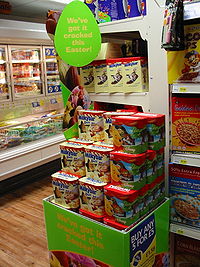
Point-of-Purchase Display: A point-of-sale display selling products related to the Easter holiday.
POS displays can include:
- shelf edging
- dummy packs
- display packs
- display stands
- mobiles
- posters
- banners
Note that POS can also refer to systems used to record transactions between the customer and the commerce, such as check-out registers, which are used at the point of sale. Don’t get confused if you see it used in this context.
Online Sales Promotion
Sales promotion techniques are certainly not new but they have been revitalized through new media and technology, especially as it relates to online usage.
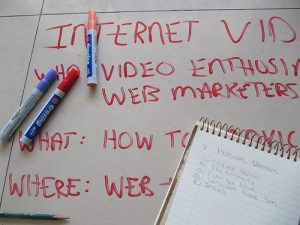
Internet Marketing Plan: Some of the same promotions that work offline also work online.
Online sales promotions are meant to turn site visitors into consumers. The objective is to get the visitor to take action by contacting a sales representative and ultimately buying the offered product. The methods to accomplish this goal are diverse and include:
- Advertising
- Loyalty and rewards programs
- Contests
- Search engine usage and optimization
- Social media
- Email blasts
- Referral marketing
- Affiliate marketing
- Inbound marketing
- Videos
- Coupons, premiums, rebates, and other discounts
Sales Promotion Techniques – B2B
Trade Allowances
Trade discounts and allowances are price reductions given to middlemen (e.g. wholesalers, industrial distributors, retailers) to encourage them to stock and give preferential treatment to an organization’s products. For example, a consumer goods company may give a retailer a 20% discount to place a larger order for soap. Such a discount might also be used to gain shelf space or a preferred position in the store. Trade discounts are often combined to include a series of functions, for example 20/12/5 could indicate a 20% discount for warehousing the product, an additional 12% discount for shipping the product, and an additional 5% discount for keeping the shelves stocked with the product.
Sales Contests
It is common for a manufacturer, for example, to sponsor sales contests for the employees of their distributors, retailers, etc. These contests are usually for significant prizes such as major electronics or trips. The goal is to encourage the sales people to emphasize the manufacturer’s products over that of the competition.
Trade Shows
Trade shows are an excellent way to get a company’s name, products, and branding in front of the target audience. Trade shows can range from small, local shows to very large international shows. They revolve around a specific industry. Any vendor who sells any type of product to that industry can apply to rent booth space. This includes vendors who sell products directly used in the industry, to outsourcing services such as payroll and human resource services to marketing and financial institutions. Attendees walk around the exhibit space at their own pace, visiting the booths that have products of interest to them. Informal yet informational conversations take place and, if the attendee is interested, they will give their contact information to the vendor to be followed up after the trade show.

